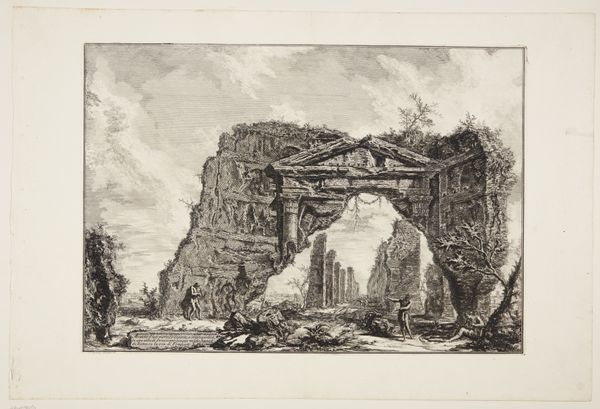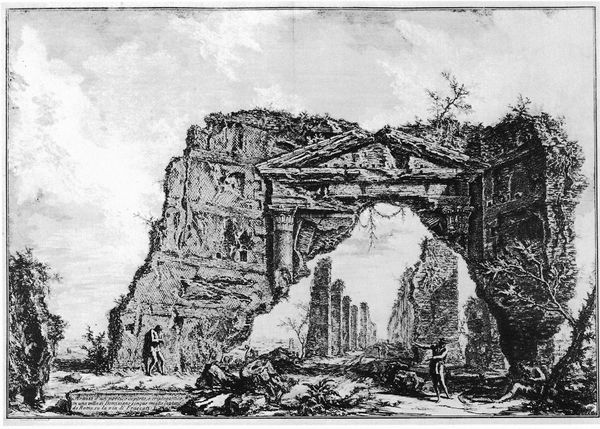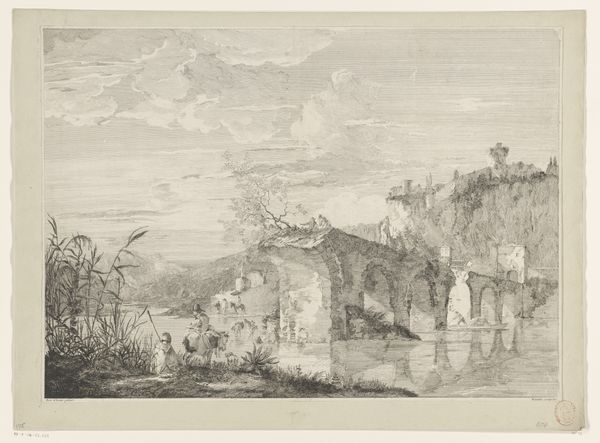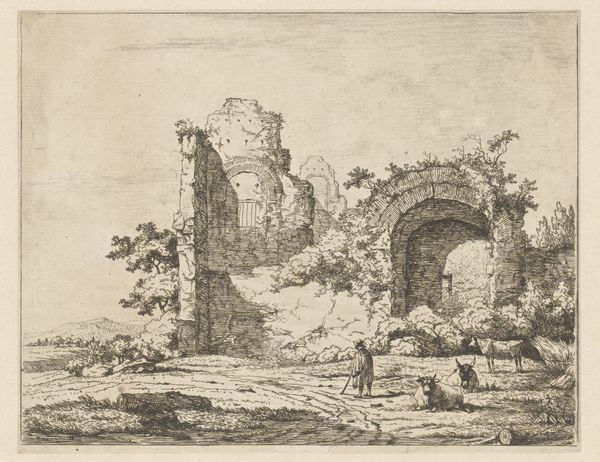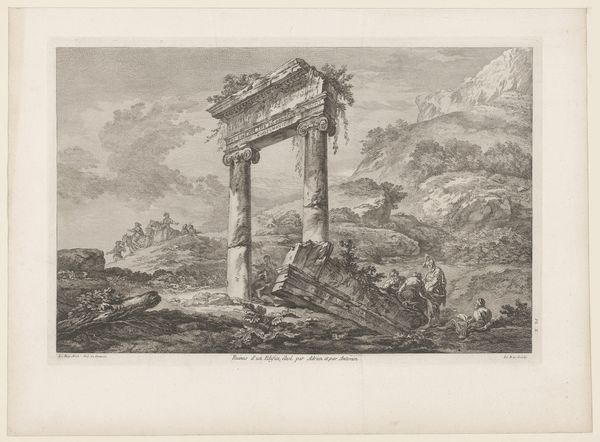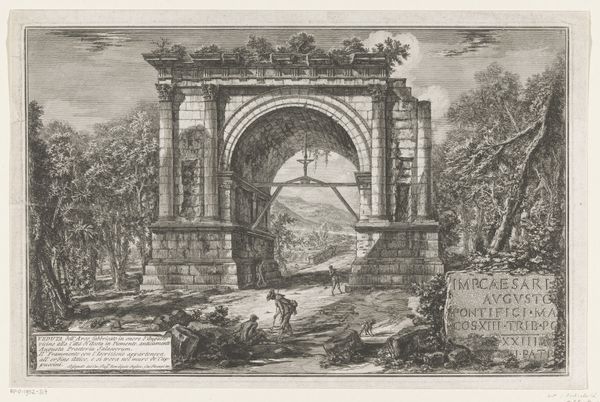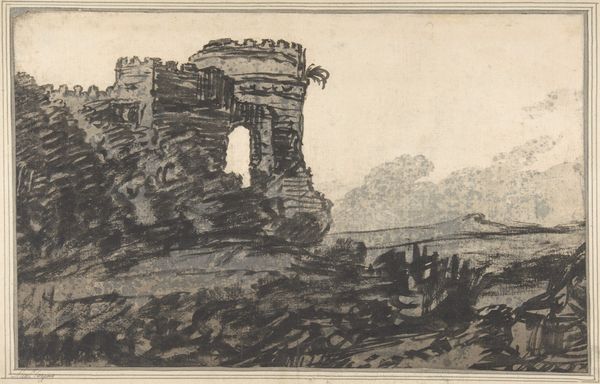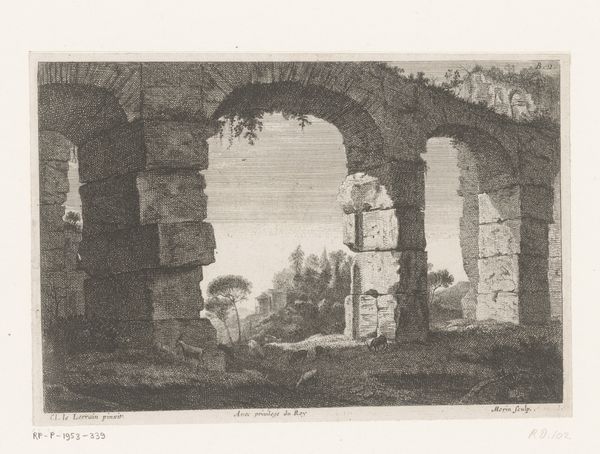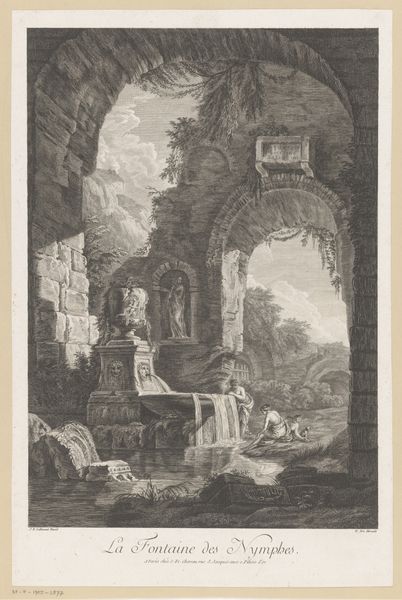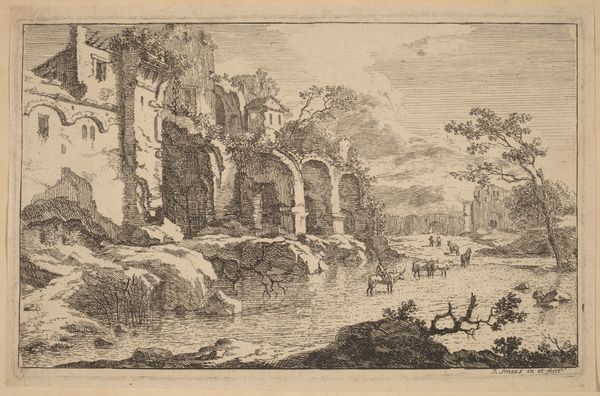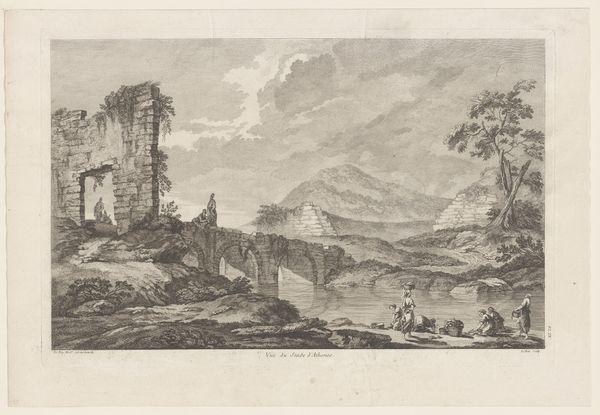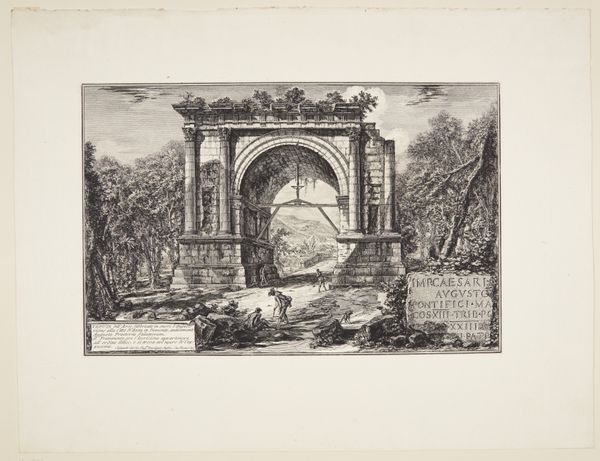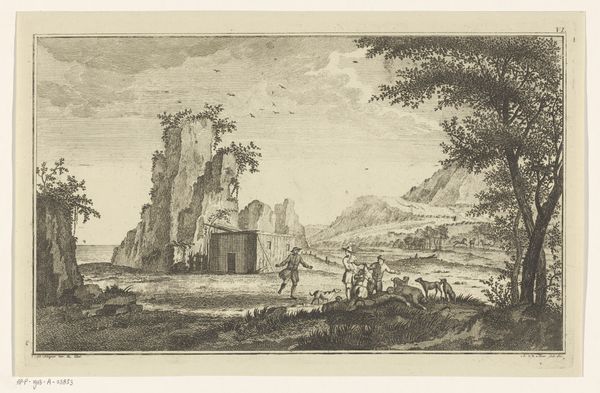
Remains of a covered portico, or a cryptoporticus, in a villa of Domitian, five miles outside Rome on the Frascati road, from Vedute di Roma (Roman Views) 1761 - 1771
0:00
0:00
drawing, print, etching
#
drawing
# print
#
etching
#
landscape
#
romanesque
Dimensions: Sheet: 20 11/16 x 26 9/16 in. (52.5 x 67.5 cm) Plate: 16 3/4 x 23 13/16 in. (42.5 x 60.5 cm)
Copyright: Public Domain
Giovanni Battista Piranesi made this etching of a covered portico, or cryptoporticus, in a villa of Domitian, five miles outside Rome on the Frascati road. Piranesi used a technique called etching, a printmaking process that relies on acid to cut lines into a metal plate. He would have coated a copper plate with a waxy, acid-resistant substance, then scratched an image into the coating with a sharp needle. The plate was then immersed in acid, which bit into the exposed metal, creating incised lines. The longer the plate remained in the acid, the deeper and darker the lines would be. Ink was then applied to the plate, filling the etched lines, and the surface was wiped clean. Finally, the plate was pressed onto paper, transferring the ink and creating a print of the image. Look closely at the image: you can see the incredible amount of work involved in creating such a detailed image. This print not only captures the grandeur of Roman architecture but also highlights the labor-intensive process of printmaking itself. Ultimately, Piranesi challenges our notions of art, craft, labor, and the modes of production within artistic creation.
Comments
No comments
Be the first to comment and join the conversation on the ultimate creative platform.
